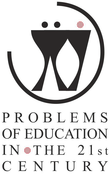INTERPLAY BETWEEN ART AND SCIENCE IN EDUCATION: “MUSIC” BASED APPROACH IN NANOSCIENCES
| Title | INTERPLAY BETWEEN ART AND SCIENCE IN EDUCATION: “MUSIC” BASED APPROACH IN NANOSCIENCES |
| Publication Type | Journal Article |
| Year of Publication | 2014 |
| Authors | Kralj, S, Aberšek, B, Kralj, I |
| Journal | Problems of Education in the 21st Century |
| Volume | 61 |
| Start Page | 67-76 |
| Pagination | Discontinuous |
| Date Published | October/2014 |
| Type of Article | Original article |
| ISSN | 1822-7864 |
| Other Numbers | ICID: 1125794 |
| Keywords | liquid crystalline shells, soft materials, teaching/learning strategies, topological defects |
| Abstract | Music can be viewed as a structure formed by notes. Different structures in music have potential to yield enormously rich diversity of different melodies. Music is a typical example where a structure defines a property. Similar concepts could be also exploited in education, in presented case in nano-sciences, which are typical representatives of soft materials the structure of which can be strongly manipulated with local geometry and presence of appropriate nanoparticles. The objects of study, named also LC shells, will be exploited as basic unit elements for future soft colloidal crystals. A different arrangement of colloids within the crystal would result in different physical properties in a similar way as different packing of atoms results in different crystals made of real atoms. In presented research will be demonstrated, how relevant basic mechanisms in thin films of nematic liquid crystals could be explained in a classroom and used as a case study, also for explanation of many other physical properties. This research topic is still in its infancy. At this stage only various defect structures in relatively simple geometries (spherical and elliptical) will be analyzed. There is a need to find simple ways to control sensitively the valence of LC shells and in particular to develop strategies to assemble them in crystal structures of desired symmetry. This would allow tailoring specific optical dispersion relations or other physical property of interest and make new ways to teach different physical properties on the »music« based approach. |
| URL | http://oaji.net/articles/2015/457-1422203894.pdf |
| DOI | 10.33225/pec/14.61.67 |
| Refereed Designation | Refereed |
| Full Text |
